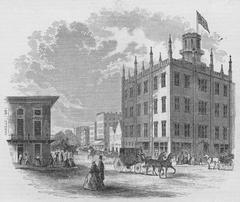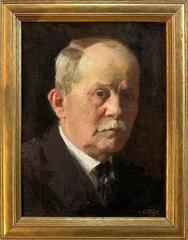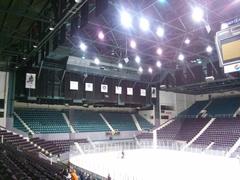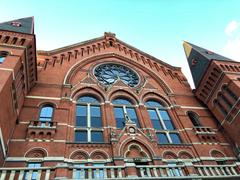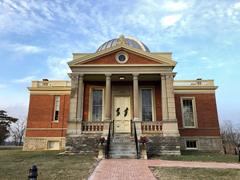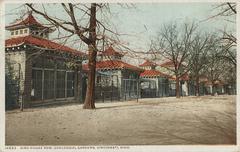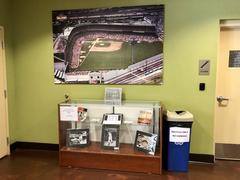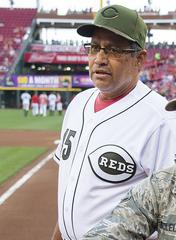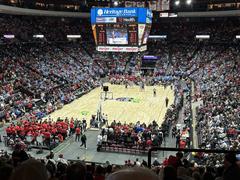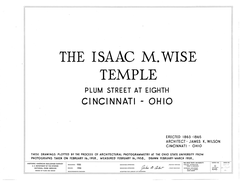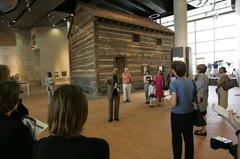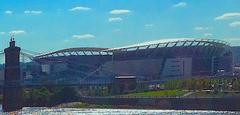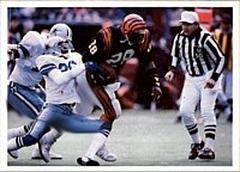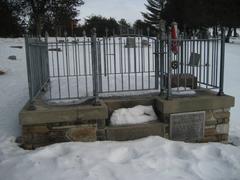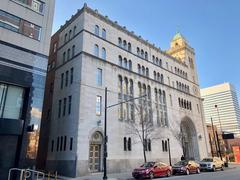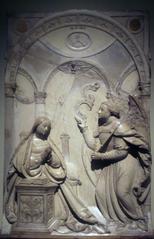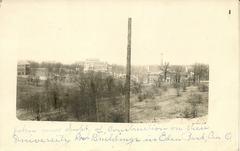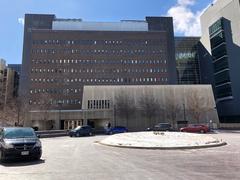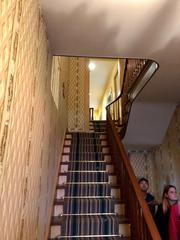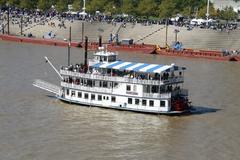University Of Cincinnati – College Conservatory Of Music
University of Cincinnati College-Conservatory of Music: Visiting Hours, Tickets, and Historical Information
Date: 14/06/2025
Introduction
Situated within the University of Cincinnati’s vibrant campus, the College-Conservatory of Music (CCM) stands among the nation’s most esteemed institutions devoted to the performing arts. Founded in 1867 by German-born educator Clara Baur, CCM has evolved from humble beginnings into a dynamic center for music, theatre, dance, and media arts. Its rich legacy and continuous innovation have made it a cornerstone of Cincinnati’s cultural landscape, offering over 1,000 public performances annually and maintaining strong ties with the city’s historic neighborhoods and arts organizations (CCM History; UC Magazine; CCM OnStage; Visit Cincy).
This comprehensive guide explores CCM’s origins, cultural impact, visiting logistics, and practical tips for making the most of your visit—whether you’re attending a world-class performance, touring the campus, or discovering Cincinnati’s artistic heritage.
Table of Contents
- Introduction
- Origins and Early Development
- Institutional Growth and Innovation
- The 1955 Merger and University Affiliation
- Pioneering Achievements and National Impact
- Architectural and Cultural Significance
- Visitor Information: Plan Your Visit to CCM
- Performances, Public Events, and Visitor Experience
- Cultural and Community Impact
- Practical Information for Visitors
- Frequently Asked Questions (FAQs)
- Conclusion
- Call to Action
- References
Origins and Early Development
CCM’s roots date back to the post-Civil War era, when Clara Baur established the Cincinnati Conservatory of Music in 1867. Starting with piano and voice lessons in a single room, Baur’s European training and commitment to excellence quickly set the Conservatory apart, attracting nearly 1,000 students by the early 1900s and some of the world’s leading faculty (CCM History; UC Magazine).
The Conservatory’s success inspired the creation of a rival institution: the College of Music of Cincinnati, founded in 1878 by George Ward Nichols and Reuben R. Springer. This institution, initially housed in Dexter Hall at Music Hall and later in the Odeon Building, was among the first American music schools with its own concert hall (UC Magazine).
Institutional Growth and Innovation
Throughout the late 19th and early 20th centuries, both the Conservatory and the College of Music shaped Cincinnati’s cultural scene. The Conservatory was a founding member of the National Association of Schools of Music in 1924 and the first major U.S. music school to offer formal dance training in 1927. The College of Music, meanwhile, established the nation’s first collegiate department in radio instruction in 1936 (CCM History; UC Magazine).
Both institutions partnered with local organizations such as the Cincinnati Symphony Orchestra to sustain enrollment and expand educational opportunities, even during economic downturns.
The 1955 Merger and University Affiliation
Recognizing the benefits of combining resources and reputations, the Cincinnati Conservatory of Music and the College of Music of Cincinnati merged in 1955, forming the College-Conservatory of Music (CCM) (CCM History). In 1962, CCM became the 14th college of the University of Cincinnati, marking a new era of academic integration and growth. Notable milestones include the construction of the modern CCM complex and the opening of Corbett Auditorium in 1967.
Pioneering Achievements and National Impact
CCM has achieved several national “firsts”: it was the first major U.S. music school to offer formal dance training (1927), the first to establish a collegiate broadcast department (1936), and the first to launch a Bachelor of Fine Arts (BFA) program in musical theatre (1968) (UC Magazine). Today, CCM offers 10 degree types across nearly 120 majors, producing alumni and faculty who are leaders in orchestras, opera, academia, and beyond (Majoring in Music; CCM Music Education).
Architectural and Cultural Significance
Located on the University of Cincinnati’s campus, the CCM complex reflects mid-20th-century architectural ambition and ongoing investment in the arts. Venues such as Corbett Auditorium, Patricia Corbett Theater, Cohen Family Studio Theater, and Watson Recital Hall blend elegance with state-of-the-art technology, accommodating everything from large-scale concerts to intimate recitals (CCM History).
Cincinnati’s broader cultural context—its jazz and classical heritage, Italianate architecture in Over-the-Rhine, and the presence of institutions like the Cincinnati Symphony Orchestra—enhances CCM’s significance as a cultural destination (Visit Cincy).
Visitor Information: Plan Your Visit to CCM
Location & Address
- Address: 2600 Clifton Ave., Cincinnati, OH 45221 (UC Campus Visit)
Visiting Hours
- Weekdays: 8:00 AM – 10:00 PM (Monday–Friday)
- Weekends: Open during scheduled performances; check the CCM website for updates.
Tickets and Admission
- Purchase: Online via the CCM Box Office, by phone, or in person.
- Pricing: Varies by event; discounts often available for students and seniors. Early booking recommended for popular performances (CCM Events).
Guided Tours
- Offered for prospective students and visitors; advance registration recommended (CCM Tours).
Accessibility
- All public venues are wheelchair accessible. Assistive listening devices and other accommodations are available upon request (CCM Accessibility).
Travel Tips
- Parking: Available in campus garages; early arrival recommended for events.
- Transportation: Public transit and rideshare are convenient alternatives.
- Nearby Attractions: The Over-the-Rhine district, Cincinnati Art Museum, Eden Park, and other cultural sites.
Special Events & Photography
- Major events, workshops, and community programs are open to the public. Exterior and public space photography is allowed, but photography during performances is restricted.
Performances, Public Events, and Visitor Experience
CCM’s event calendar features over 1,000 public performances annually, spanning operas, musicals, orchestral and chamber concerts, jazz, dance, and multimedia showcases. Venues such as Corbett Auditorium and Patricia Corbett Theater provide immersive experiences for audiences and performers alike. Many events are free or affordably priced, fostering community engagement (CCM OnStage).
Cultural and Community Impact
CCM’s influence extends well beyond the campus:
- Faculty Excellence: Over 150 distinguished faculty members, including professionals from the Cincinnati Symphony Orchestra and Cincinnati Opera (source).
- Student Opportunities: More than 40 student ensembles perform regularly, often in collaboration with leading arts organizations.
- Community Programs: The Cincinnati Youth Choir and initiatives like the Cincinnati Sounds project promote outreach, diversity, and exploration of the city’s musical heritage (Cincinnati Youth Choir; Cincinnati Sounds).
- Economic and Urban Impact: CCM performances draw thousands each year, supporting local businesses and contributing to Cincinnati’s status as an arts destination (source).
Practical Information for Visitors
- Location: 2600 Clifton Ave., Cincinnati, OH 45220 (UC Campus Visit)
- Parking: Campus garages available; plan for high demand during major events.
- Dining: Clifton neighborhood offers a variety of dining and hospitality options.
- Accessibility: Contact [email protected] or call 513-556-6638 for specific needs (CCM Accessibility).
- Nearby Attractions: Cincinnati Art Museum, Eden Park, and Over-the-Rhine historic district.
Frequently Asked Questions (FAQs)
Q: What are CCM’s visiting hours?
A: Public areas are open Monday–Friday, 8:00 AM–10:00 PM, with additional hours during scheduled events.
Q: How can I buy CCM tickets?
A: Purchase online at the CCM Box Office, by phone, or in person.
Q: Are guided tours available?
A: Yes, by appointment via the CCM Campus Visit page.
Q: Is parking available?
A: Yes, in campus garages. Arrive early for events.
Q: Are CCM facilities accessible?
A: Yes, with accommodations available upon request.
Q: What nearby historical sites can I visit?
A: Eden Park, Cincinnati Art Museum, Over-the-Rhine district, Music Hall.
Conclusion
The University of Cincinnati College-Conservatory of Music stands as a beacon of artistic achievement, educational excellence, and community engagement. Its storied history, architectural beauty, and diverse programming make it an essential destination for anyone interested in the performing arts or Cincinnati’s cultural heritage. Whether attending a performance, taking a tour, or exploring nearby attractions, visitors will discover a unique blend of tradition, innovation, and community spirit at CCM.
Call to Action
For the latest CCM events, ticketing, and visitor information, download the Audiala mobile app. Explore related articles about Cincinnati’s arts scene, and follow CCM and Audiala on social media for exclusive content, insider tips, and behind-the-scenes highlights.
References
- University of Cincinnati College-Conservatory of Music (CCM) History, 2024, University of Cincinnati (CCM History)
- UC Magazine: CCM 150 Years of Excellence, 2017, University of Cincinnati (UC Magazine)
- CCM OnStage Event Information, 2025, University of Cincinnati (CCM OnStage)
- Visiting Cincinnati Cultural and Historical Sites, 2025, Visit Cincy (Visit Cincy)
- University of Cincinnati Campus Visit Information, 2024, University of Cincinnati (CCM Campus Visit)
- CCM Box Office Ticketing, 2025, University of Cincinnati (CCM Box Office)
- Cincinnati Youth Choir (Cincinnati Youth Choir)
- Cincinnati Sounds Initiative (Cincinnati Sounds)
- Majoring in Music (Majoring in Music)
- CCM Music Education (CCM Music Education)
- CCM Events (CCM Events)
- Cincinnati Music Hall
